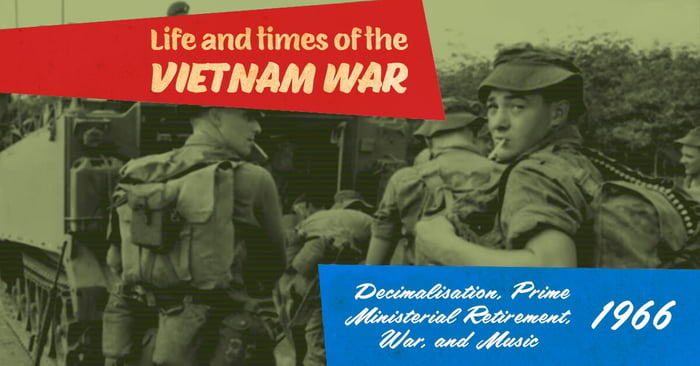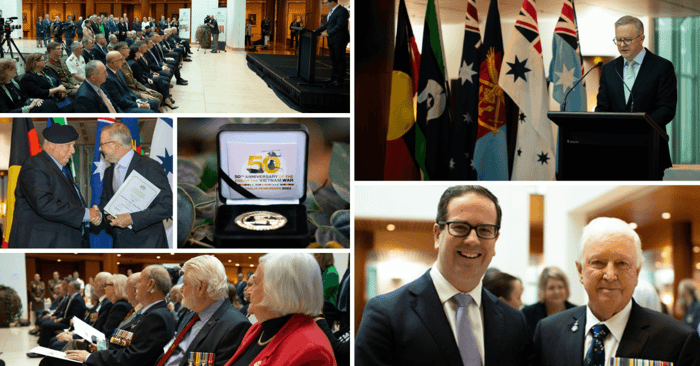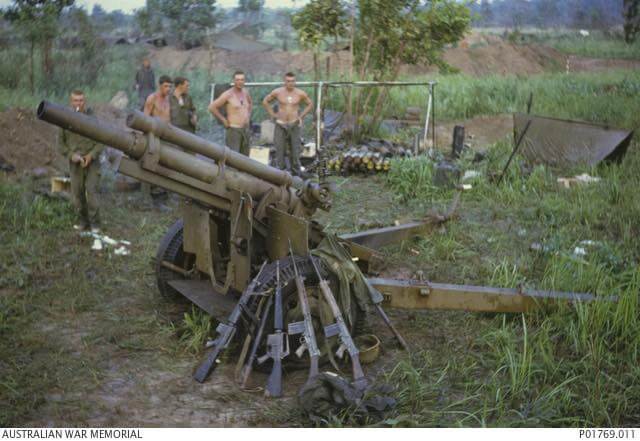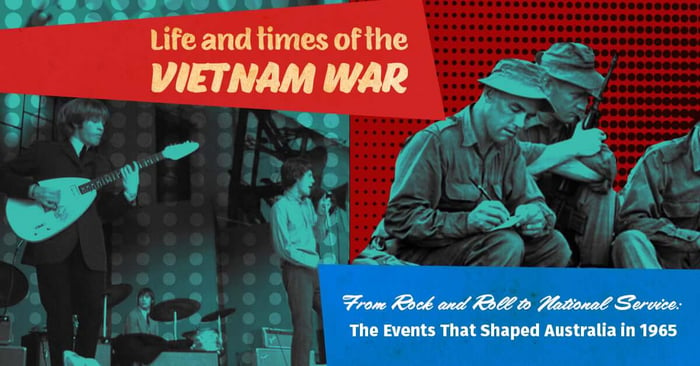
From Rock and Roll to National Service
1965 was a defining year for Australia's involvement in the Vietnam War; the escalation of military force divided the nation, and the effect of the National Service Act 1964 was starting to be felt. After the positive steps of the 1962 amendment of the Commonwealth Electoral Act began to take effect, 1965 stagnated in comparison.
Life And Times
The Rolling Stones toured Australia to start the year, captivating over 100,000 people with distinguished rock and roll tunes throughout January and February.
On 10 March, the initial draw of the birthday lottery took place, which was utilised to verify eligibility for National Service training. Most 20-year-old men were required to register. They could be drafted for up to 5 years of army service, including 2 years of full-time duty and 3 years of part-time commitment, with a possibility of combat in Vietnam. Birthdates were drawn from a secret ballot process involving marbles or wooden balls. Over 1,000 dates were drawn across 16 ballots from 10 March 1965 to 22 September 1972.
Prime Minister Robert Menzies, on 29 April, announced that an infantry battalion would be dispatched to South Vietnam. The battalion would be escorted by an armoured personnel carrier (APC) troop, a signals troop, and a logistic support company. 1st Battalion, Royal Australian Regiment (1RAR) was chosen as the combat force and had an advance party on 24 May, leaving for South Vietnam to serve the US 173rd Airborne Division.
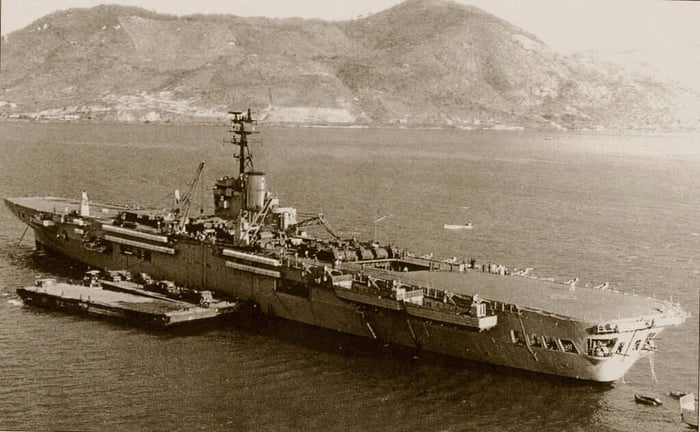
HMAS Sydney
HMAS Sydney arrived in Vung Tau, South Vietnam, on 8 June with most Australian forces. After arriving, they were assigned to work with the US 173rd Airborne Brigade. They were also joined by a Royal New Zealand Army artillery battery. The battalion participated in numerous operations in Biên Hòa Province throughout the year, including meaningful engagements at Gang Toi, Operation Crimp, and Suoi Bong Trang.
On 30 June, the initial national service intake commenced their recruit training. After basic training, National Servicemen were assigned to various Corps, with most being assigned to Infantry, allowing the Army to expand the Royal Australian Regiment to nine Battalions. The Army was the only branch that used this selection process for deployment to Vietnam. In contrast, the Navy and Air Force used alternative methods. However, those eligible for conscription could opt for six years of service in the CMF instead of two years of National Service.
On 22 October, approximately 400 protestors disrupted traffic during peak hour in Sydney on Friday during a demonstration against the Vietnam War. The demonstration included members of various organisations, including the Waterside Workers' Federation, the Communist Party, the ALP youth body, women's organisations, and university students. The protest started peacefully but escalated, resulting in about 60 arrests, with concerns that a riot might break out.
Some physical altercations occurred between police and protestors. Some people caught in the chaos attempted to remove protestors' banners and tore them up. Police called in uniformed and special officers to cordon off the streets with radio cars and police vans.
The Battle of Gang Toi on 8 November was the first major Australian-US Joint Operation and Australia's first significant engagement with the Viet Cong; 1RAR would suffer two fatalities; the bodies of Private Richard Parker and Private Peter Gillson could not be recovered until 2007, with both remains returning to Australia for burial.

Members of the Australian Army Training Team Vietnam (AATTV). Left to right, back row: Warrant Officers P. M. Cerda-Pavia, B. F. Davis; Front Row: Major A. S. Hinds (Public Relations Officer visiting from Saigon), Warrant Officers R. J. Swanton (killed in action 1965-11-13) and G. C. Neitz (Formerly 200320)
Lastly, on 13 November, Australian Army Warrant Officer Class Two Kevin Arthur 'Dasher' Wheatley and Warrant Officer Class Two Ronald Swanton were attacked while in the Tra Bong valley. Despite being under heavy fire and Swanton being shot, Wheatley refused to leave his dying comrade. Instead, he pulled the pins from two grenades and waited for the enemy; both men were found deceased the following day. Wheatley's bravery was acknowledged, posthumously awarded the Victoria Cross on 15 December 1966, the General Service Medal, and the United States Silver Star presented to his son George on 14 December 2021.
1965 was a significant year in Australia's involvement in the Vietnam War. The National Service Act divided the nation, requiring many young men to register for the draft and potentially serve in Vietnam. The dispatch of 1RAR marked the beginning of Australia's combat involvement in the war, with the battalion participating in several significant operations throughout the year. The Battle of Gang Toi and the deaths of Private Parker and Private Gillson served as a stark reminder of the dangers of combat in Vietnam. The year also saw protests against the war, with the demonstration in Sydney resulting in several arrests and physical altercations. Overall, 1965 marked a turning point in Australia's involvement in the Vietnam War, with significant consequences for the nation and its people.
Music of 1965
In 1965, while Australia was embroiled in the Vietnam War and divided, music was a refuge for many. A reminder that even in difficult times, people could find comfort and joy in the power of song.
Hit songs came from artists across the globe. From International artists - Beatles, Elvis Presley, and Herman’s Hermits- to Australian artists - Normie Rowe’s and Julie Rogers - had hit songs making the charts.
Music List:
|
No. |
Song Title |
Artist |
|
1. |
Que Sera, Sera / Shakin' All Over |
Normie Rowe |
|
2. |
The Carnival is Over |
The Seekers |
|
3. |
Help! |
The Beatles |
|
4. |
Rock and Roll Music / Honey Don't |
The Beatles |
|
5. |
Crying in the Chapel |
Elvis Presley |
|
6. |
I'll Never Find Another You |
The Seekers |
|
7. |
The Wedding |
Julie Rogers |
|
8. |
Under the Boardwalk / Walking the Dog EP |
Rolling Stones |
|
9. |
Mrs. Brown, You've Got a Lovely Daughter |
Herman's Hermits |
|
10. |
Ticket to Ride |
The Beatles |
|
11. |
Il Silenzio |
Nini Rosso |
|
12. |
I Told the Brook / Funny Face |
Billy Thorpe and the Aztecs |
|
13. |
Tell Him I'm Not Home |
Normie Rowe |
|
14. |
(I Can't Get No) Satisfaction |
Rolling Stones |
|
15. |
Yesterday / It's Only Love |
The Beatles |
Join the Conversation
We're helping Australians of all ages better understand the life and times of our Vietnam Veterans as we commemorate the end of Australia's involvement in the war 50 years ago. We're sharing interesting social bits and pieces from the Vietnam War era to give you a feel of the world back then, but most importantly we're sharing your memories, stories, and pride. Your memories of the Vietnam era; your family growing up in the 1960s and 70s; or stories you have about the life and times of your veteran dad, pop, uncle, or aunt will breathe life into their story. Share your pictures, anecdotes, and memories so others can see our veterans as more than soldiers. We honour, respect and admire, but few know. Help us honour our Veterans.




